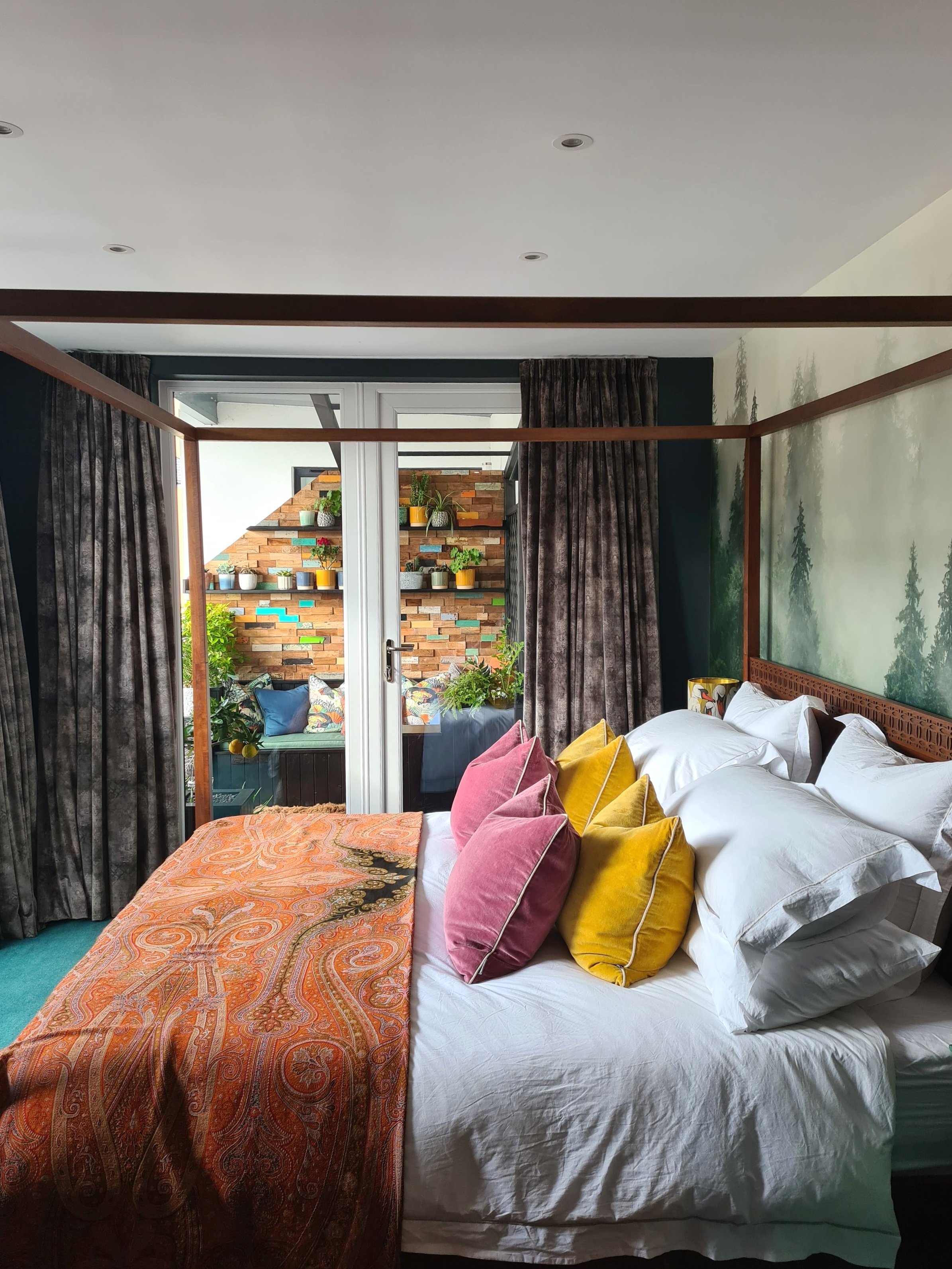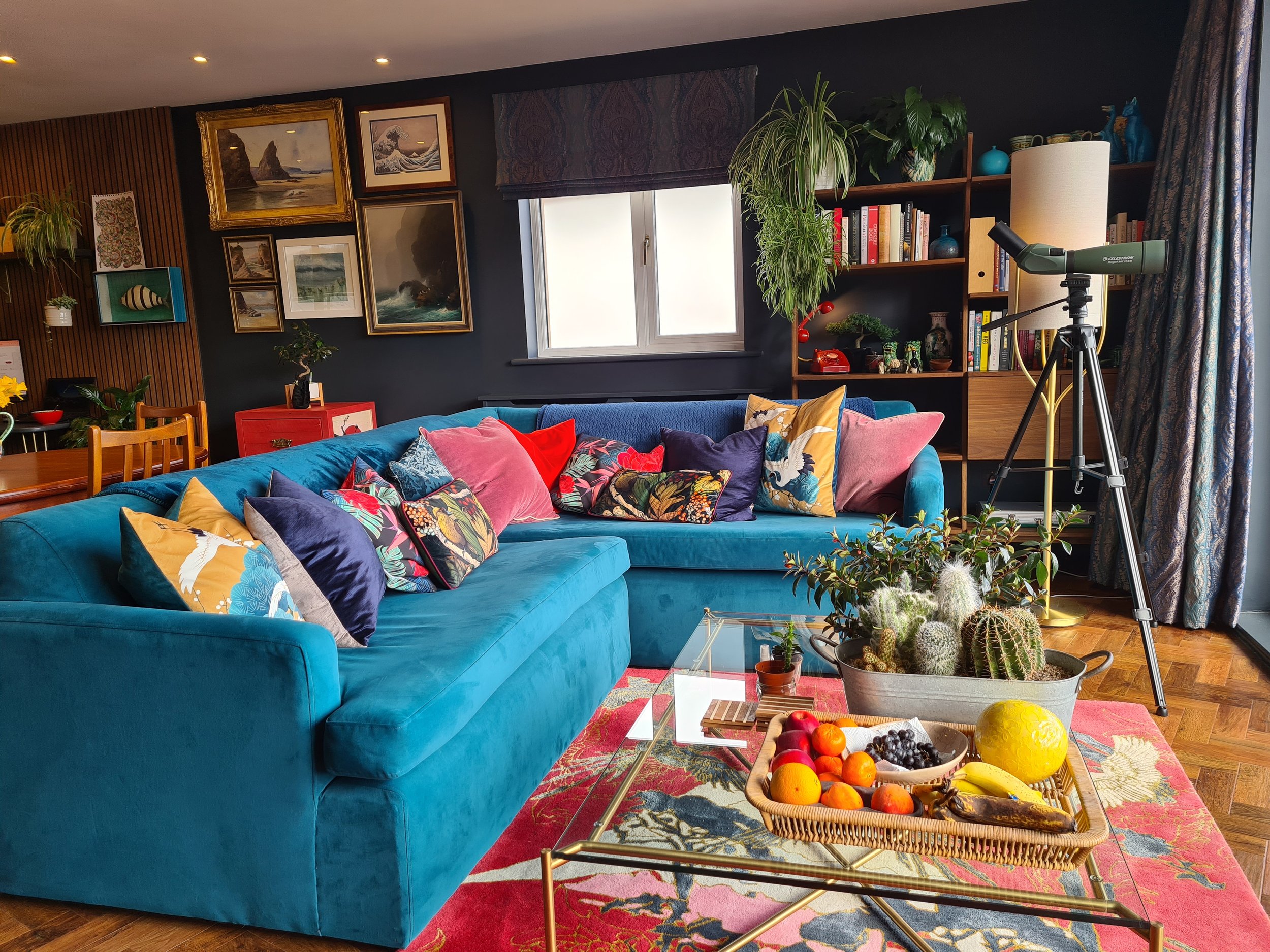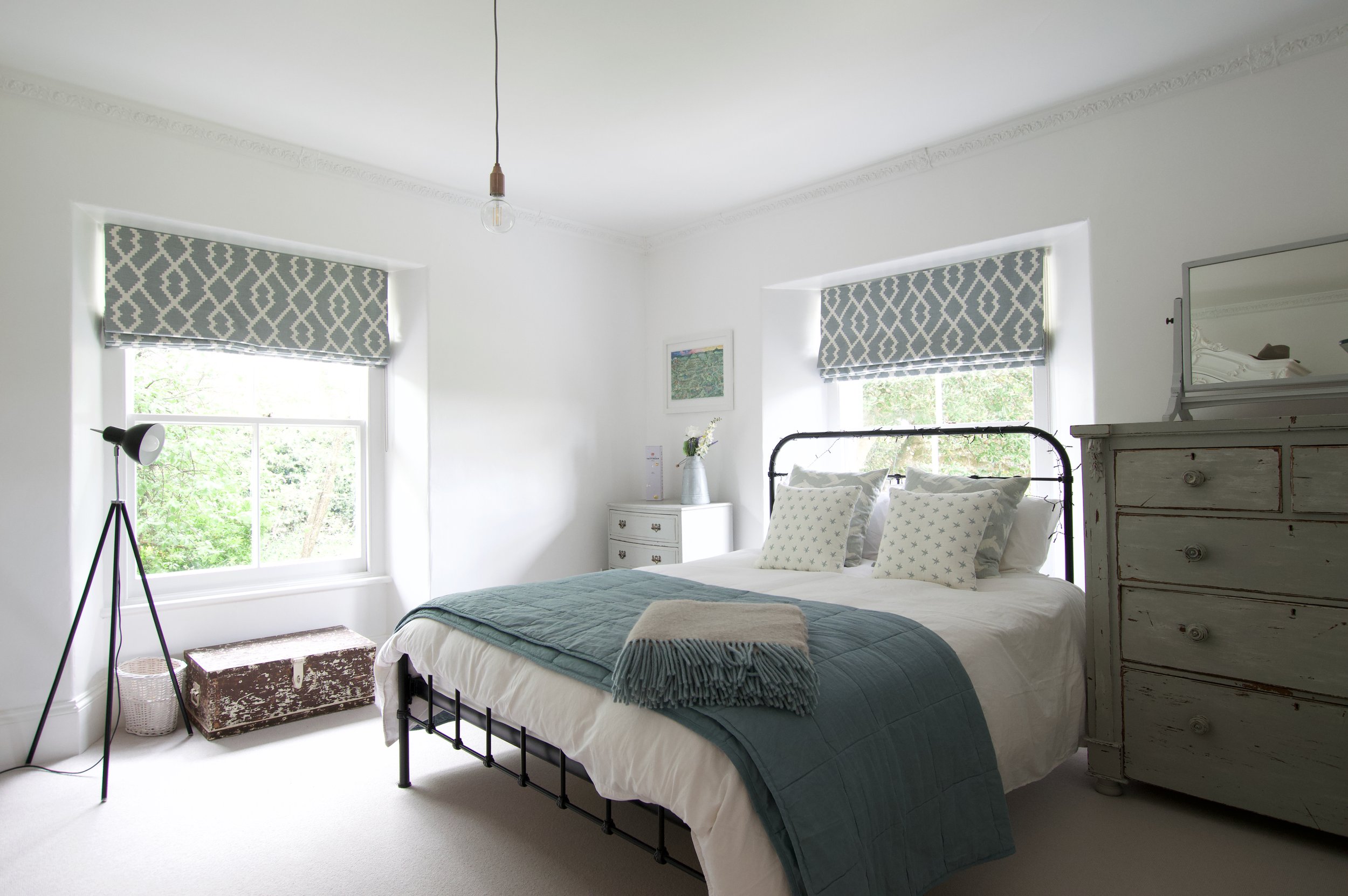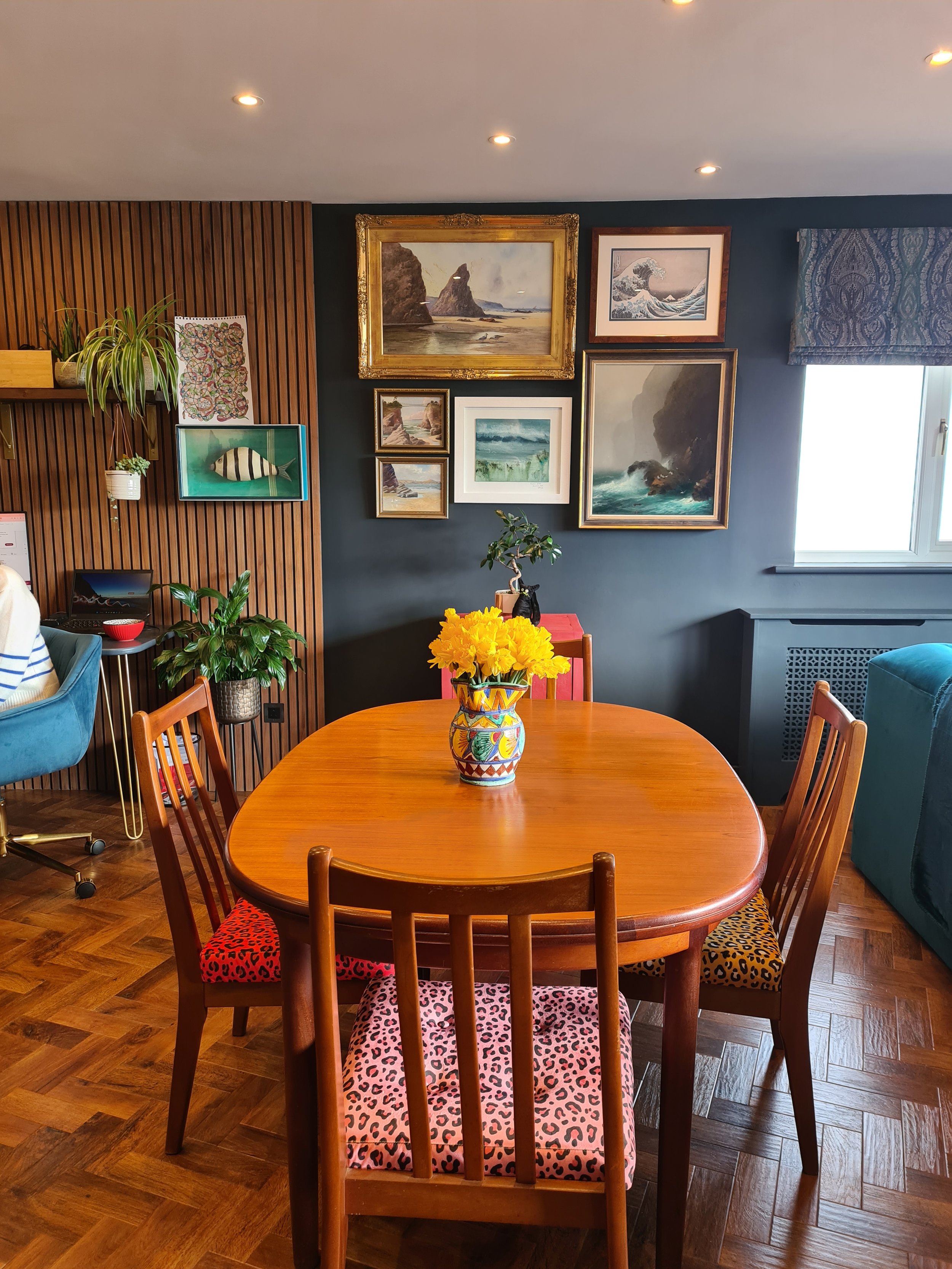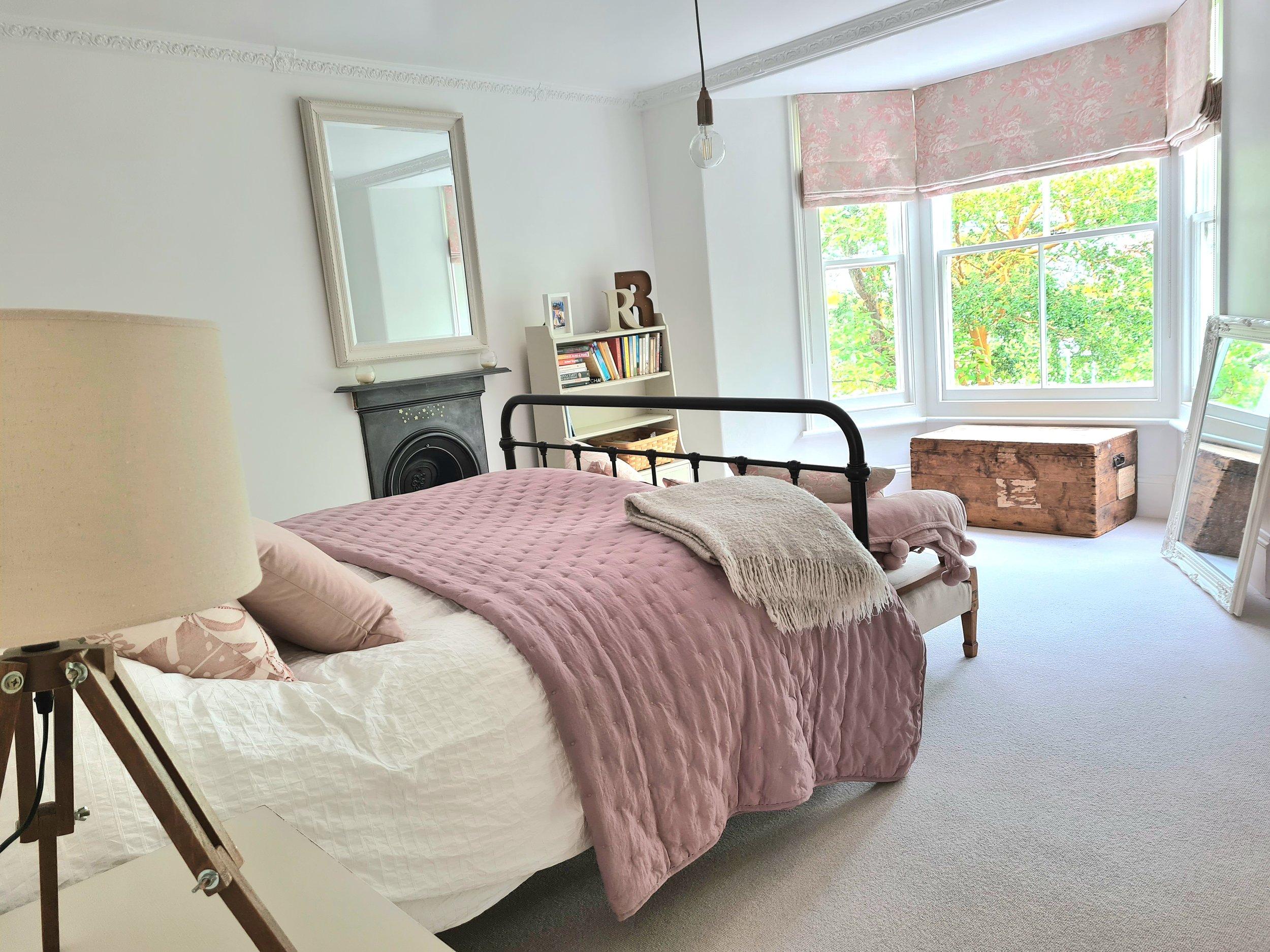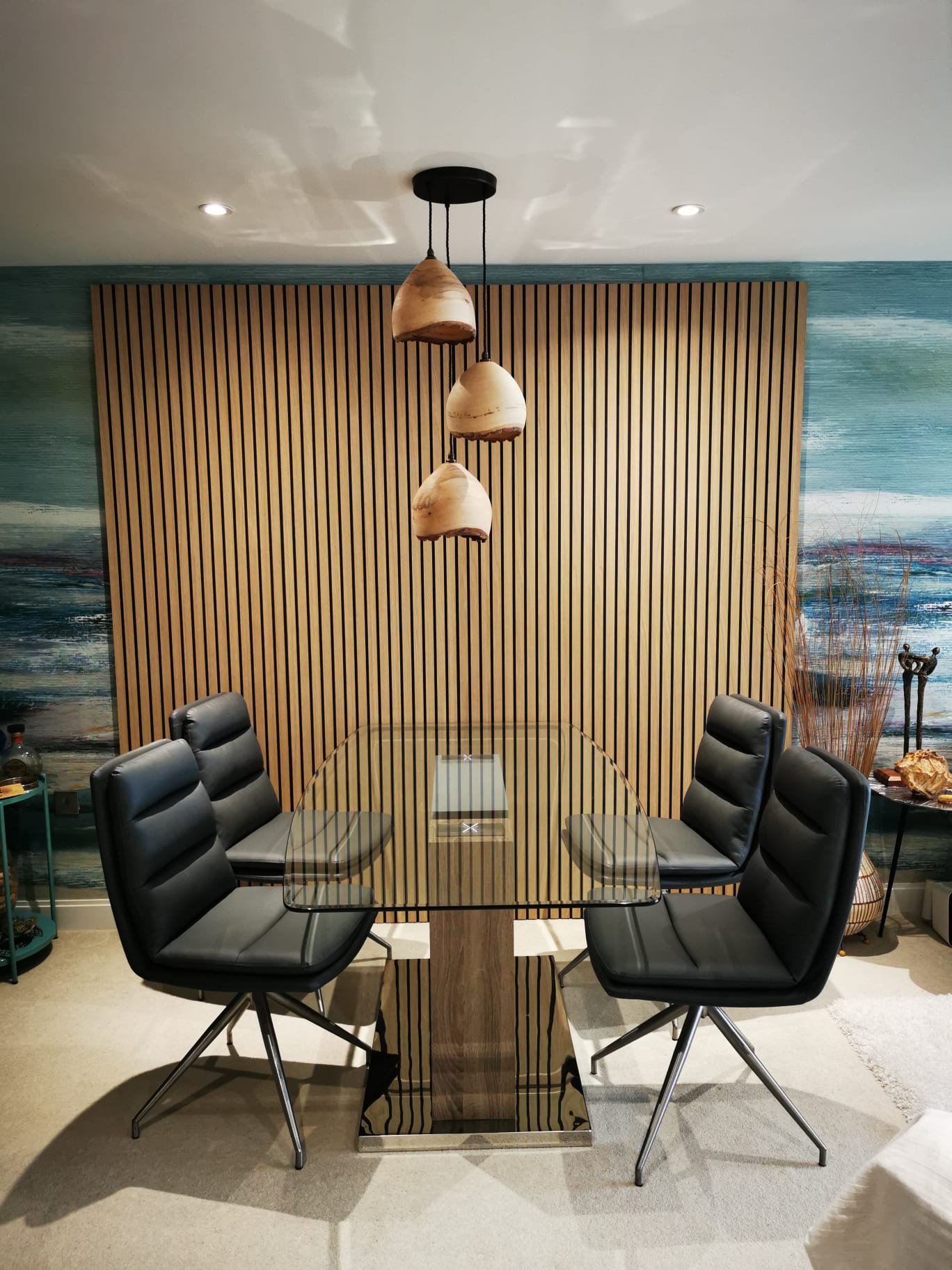5 Interior Design Tips for a More Sustainable Home
/This month we are thrilled to welcome Liselle Miller, founder of Zenterior; an award winning Interior design studio based in St Austell, Cornwall. With a business that actively makes choices to use products from local and sustainable sources, who better to write an article for us on how to make eco-conscious and cost effective choices to create a beautiful home that will stand the test of time. Enjoy the read!
The cost-of-living crisis is smacking everyone in the wallet right now, so it is no wonder that we are getting more enquiries about how we can implement design decisions that help make a home more efficient and sustainable. Zenterior was founded with eco-consciousness at its core, so thankfully this is a question we have been contemplating and working on solutions for, for many years.
#1 Be Unfashionable
This may seem like a very counter intuitive piece of advice for an interior designer to proffer, however it is really important to be aware of your influences when decorating your home. It is virtually impossible in modern culture to avoid absorbing fashion trends. They are everywhere from shop windows, to magazines, TV, and even the colour schemes of the websites we visit. The danger here is that you get seduced into decorating in a style that will date quicker than a Tinder addict and you’ll find yourself wanting to rip it all out and start again in a couple of years’ time.
Tempting as it may be to turn your home into a showroom of the latest must-haves, you will get a greater sense of fulfilment and feel more at home in a scheme that says more about you and your family than it does about what’s in and what’s out. That is not to say that you cannot use items, colours or ideas that are trending, just make sure that it is something that you love for the right reasons and build your own scheme around that.
Using tools like Pinterest or scrapbooking can be really helpful in collecting images of interiors that appeal to you, but before taking the plunge, take the time to assess what it is you like about these schemes. Do they truly represent you, fit your lifestyle, and are they using colours that you are always drawn to? Designing your home around you is the best way to ensure you are creating an interior that you will love just as much in 10 years’ time as you do today.
#2 Nature Knows Best
Use natural fibres. The warmest of all materials is natural wool, which we also happen to manufacture a lot of right here in the UK. This makes wool an excellent choice for curtains, blinds and carpets to help insulate your home. Natural fibres are also breathable in a way that polyesters are not. This is relevant in both period properties that can be prone to condensation as well as to modern properties that depend on vents in double glazed windows to keep the air circulating around your home. If you want to keep that air flow moving and help resist the need for harsh mould killing chemicals, then natural fibres are the way to go.
Curtains or blinds can also have added cotton interlining, which is like having a blanket inserted between the curtain fabric and lining. Imagine hanging a duvet at your windows, keeping your house snuggly warm whilst still keeping the natural breathability of cotton.
Duvets are not the only household items that are tog rated for insulation, carpets and flooring are rated in a similar way. Unless you have underfloor heating, pick a carpet with a higher tog rating and don’t forget you can boost that with underlay as well. It all helps to keep that heat in during those colder months.
Natural fibres also have an added benefit when it comes to complying with UK fire safety regulations. Wool is the only fabric that is inherently fire retardant without being chemically treated. I’ll try not to contemplate the evolutionary function of this for sheep (answers on a postcard) but it is very useful when you are trying to avoid using environmentally damaging and carcinogenic fire retardant chemicals. Due to natural fibres not being as flammable as polyester, if you are reupholstering furniture in a domestic setting with a natural material, all you need is a wool barrier cloth to be compliant, or nothing at all if you are using wool as your main fabric.
Fire retardancy compliance is not the only reason for chemical processing in interior products that are damaging to our environment. Look for organic cottons and linens for fibres that have been produced without pesticides and eco-friendly inks for printing and dyeing methods that only leave their mark in the desired way.
Curtains and blinds not your style? Consider shutters. According to research conducted into the thermal performance of traditional windows by English Heritage with Glasgow Caledonian University, well fitted shutters top the chart for the most effective window treatment for heat insulation, resulting in up to a 58% reduction in heat loss, making shutters an excellent choice for energy efficiency.
#3 Upcycle
Disposable furniture is a major problem in modern society. Inbuilt obsolescence, along with the idea that fast fashion should be just as applicable in the home as it is in clothing, has led to mass production of poor-quality furniture that has its roots in a lot of the global and environmental exploitation we would like to believe was a thing of the past.
There are of course companies, many of them small businesses and tradespeople, who are making furniture using traditional methods and with responsible sourcing at their heart, but inflation and other political factors has meant that these options aren’t affordable to everyone. I would advise anyone who is on the fence in these situations to consider that commissioning the right piece from a talented crafts person will give them an heirloom that will last more than a lifetime, as opposed to an item that isn’t really suitable for purpose.
If a new bespoke or handcrafted item is out of your price range, check out your local charity shops, auctions and tools like Gumtree, Freetrader or Facebook marketplace. You can pick up some seriously high quality furniture that, given a little love and imagination, can be perfect for your home and will stand the test of time. The chair that everyone fights over in my own home is a vintage Parker Knoll Rocker Recliner (listed as free to collect) that we reupholstered to create a funky accent chair. Some vintage items you can find are beautifully handcrafted from rare woods that you simply cannot find anywhere in modern production.
#4 Choose Eco Friendly Paint
Household paint has long been a culprit for its impact on the environment, and is likely to be the aspect of decorating that will need to be re-done most frequently to keep your home looking fresh. Paints were developed with the important factors being depth, intensity and consistency of colour combined with a smooth to use finish and a long shelf life in the tin. The unfortunate by-product of these priorities has been the use of toxic chemicals and VOC’s (volatile organic compounds) that are both bad for the environment and for your health as well. The EU passed a law demanding that all interior paints had to bring their VOC’s below a certain level by 2010, but some companies have used compliance with this legislation as an excuse to label their paints as eco-friendly when there is plenty more work to be done to be able to earnestly use the term. In recent years, increased awareness around environmental issues has turned attention to the matter of how to achieve the desired results whilst bringing the environmental impact under control. The first brand to actively launch on an environmental footing, and achieve B Corp certification as Climate Positive, is Coat paints with their belt and braces approach to sustainability.
They offer recyclable colour cards instead of tester pots, all of their paints are low VOC water-based paints, they use sustainable bamboo products instead of plastics and all of their packaging is recyclable. They are sourced and produced right here in the UK minimising their carbon footprint.
Other brands to look out for are Little Greene, Edward Bulmer, Earthborn, Graphenstone and House of Hackney, all of whom are taking the issue seriously and variably boasting carbon offsetting, funding further eco research, or even championing paint that actively captures CO2’s from the environment.
#5 Lighting Options
Bulbs are indeed becoming more efficient and the addition of smart bulbs and switches and so forth are certainly making it a lot easier to keep control over when lights are turned on and off, but lighting design has a lot to add when it comes to efficient lighting in the home.
We break lighting down into three categories, functional, atmospheric and overhead. Functional lighting is the bright, direct light we need for working. Examples of this include kitchen worktops, reading and office desk spaces. This type of lighting needs to be bright and directional and therefore can be the most expensive to use. Consider making sure that this type of lighting is not essential for being in the space when the working lights are not required. Examples of this are having under counter lights in the kitchen for when you are cooking, lamps for reading or on your desk when working. Atmospheric lights add mood and drama to a room. These are often softer and add focus within your space. Lamps, hidden lighting and feature pendants fall into this category and tend to be the best lighting to use when you are relaxing in a space. As such, these are likely to be on the longest, so it’s worth ensuring that these are as efficient as possible.
We talk about zoning a lot in interior design, and it is very relevant when it comes to overhead lighting. Recessed spotlights are extremely popular and work really well to give an overall spread of light in a space. In open plan spaces, think about putting each area on a separate circuit and dimmer switch so you can light the space as required. This can also help with making a large open plan space feel more intimate.
In summary, I am not suggesting in the slightest that we can solve the cost of living crisis by decorating our way out of it, but taking an approach to design in the first place that is keeping sustainability at the forefront of our thinking can help us all towards more efficient, less pollutant, and healthier homes in the future.
Follow the link to find out more about the Interior design services that Zenterior offer. Click here to view or follow their account on Instagram.

